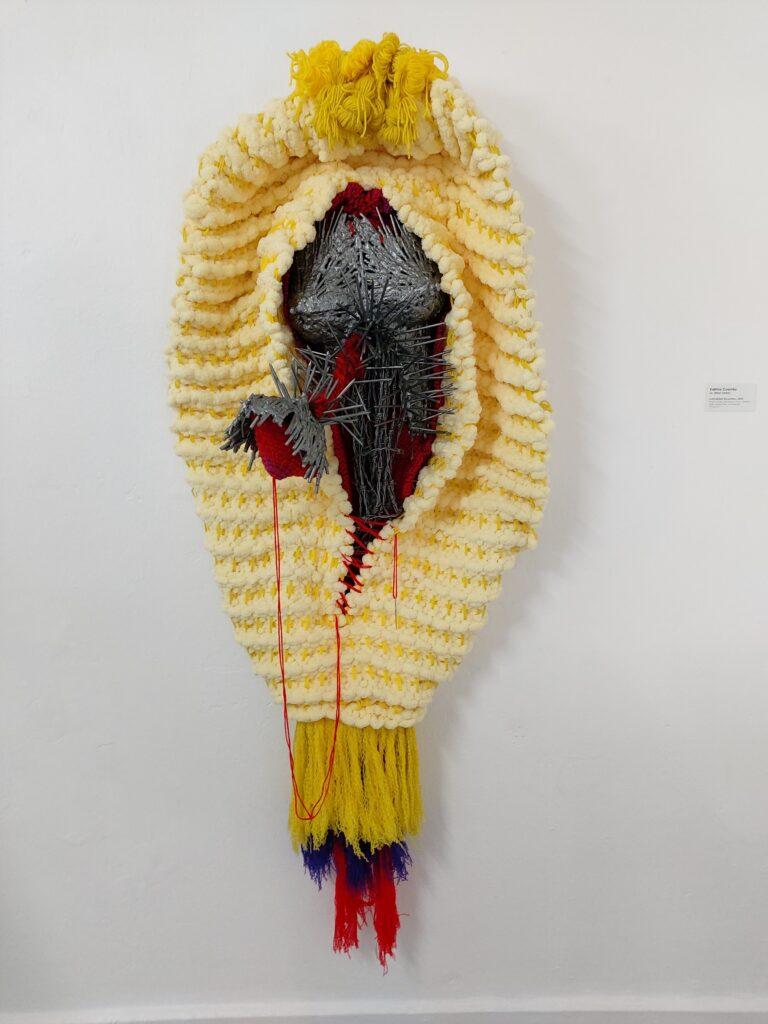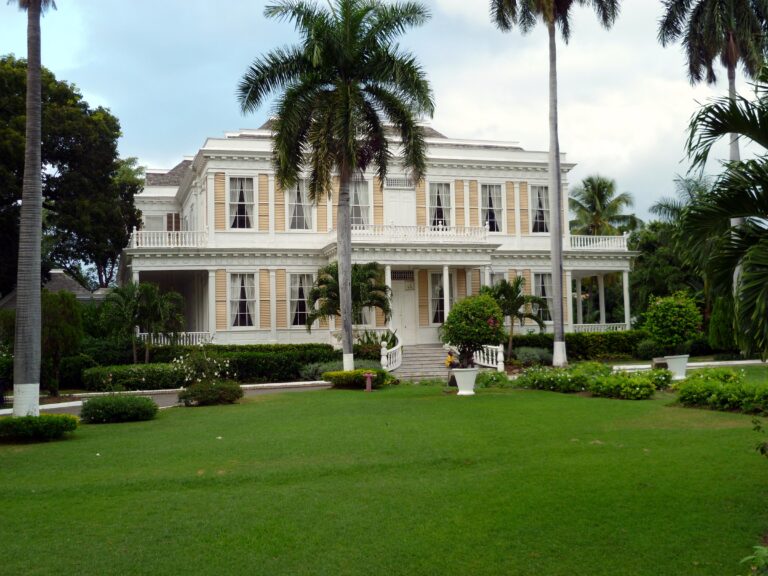About that Devon House courtyard debacle

Part 1
There has been intense outrage on social media since the Devon House courtyard reopened, after being closed for several months for renovations. It turned out that most of the lush greenery was removed and the courtyard was almost completely paved. Many people hate the barren new look but, in what has now become the default official response to such concerns, these criticisms are arrogantly dismissed. Officials claim that the renovations were necessary, and as yet incomplete, and that the area will soon look greener again.
The public concerns focused on two major issues: whether the renovation was appropriate to Devon House as a supposedly protected heritage site, and the environmental implications. Much of the public ire seemed related to broader concerns about the recent, out of control “construction boom” in the city of Kingston, and the sense that the city is becoming increasingly unliveable, unsustainable and de-historicized, as it is being turned into a concrete-covered heat sink with aspirational but utterly bland and generic luxury condos, business and retail complexes and, of course, second hand car lots that fail to address the actual housing, infrastructure, heritage, and lifestyle needs. This poorly planned, helter-skelter urban “development” makes it all the more important to protect and preserve green spaces, and to ensure that the public has access.
Like many people, I really liked and enjoyed the Devon House courtyard as it was before the most recent renovations. I loved the lush greenery, the beautiful large trees (which are becoming increasingly rare in Kingston), and the welcoming, small-scale intimacy, although it is in fact a fairly large space. I can see that a few tweaks had become necessary, to provide more seating and easier access, but there was absolutely no need to raze this lovely inner garden, turning it into a paved open expanse. Some subtle but judicious interventions would have done the job. The courtyard now has all the shallow, sanitized “staged authenticity” of an all-inclusive hotel or shopping mall, which is not appropriate for a heritage site. And, to put it frankly, it is quite ugly, with little hope for substantial improvements once the project is completed (and it is indeed not complete, with dangling electrical wires, orange traffic cones, plastic coverings, and caution tape all over the place). Even when the newly-planted vegetation grows in, it will never again be the green space it was before.
This is not about being a purist or resistant to change, as the appearance of the courtyard had already changed a number of times. Most of the buildings around the courtyard are not, in fact, part of the original structure but were added when major renovations were done, with the most significant modifications in the late 1960s and 80s, but those changes were generally consistent with the spirit and aesthetic of the place. It is, however, not the first time that renovations and additions at Devon House have been controversial. For instance, the rather bizarre metal and brick pavilions that were added to the front lawns in the 1980s generated public criticism and were quietly removed, after a while. But, at least then, mistakes were recognized and corrected.

Part of the problem with the current courtyard renovation is, also, that there are far more urgent issues to deal with at Devon House. This includes the negative impact on traffic congestion on Waterloo Road and, particularly, Kingsway; the unsightly, walled and ludicrously expensive Kid Zone playground; the increasingly unkempt and crowded back lawns; and the endless, poorly managed lines at the Devon House I-Scream place (the ice cream is wonderful, but do we really have to prove ourselves worthy before we get a cone?). It may well be that Devon House is already operating above its capacity, which is a serious management problem that needs to be addressed to safeguard its sustainability as a heritage site. The minor technical difficulties with the courtyard were the least of Devon House’s problems.
The relevant authorities – crucially including the boards and management of the Devon House Company, the Tourism Enhancement Fund (TEF), and the Jamaica National Heritage Trust (JNHT) – should be held to account over the courtyard debacle and also over the tone-deaf, dismissive statements that have been made in defence of the project. Such responses have become a distressingly predictable part of an increasingly undemocratic “Papa knows best” political culture. The Devon House courtyard debacle is ultimately a question of leadership, governance and sound stewardship of Jamaica’s heritage and environmental resources. (I will write more about this in a forthcoming column).
The present controversy about the Devon House courtyard cannot be allowed to be another nine-day wonder, as bigger issues are at stake. Part of the problem is that decisions about Devon House, which falls under the Ministry of Tourism, are now almost entirely made in terms of its role as an attraction and its money-making potential, as a place for events and retail and gastronomical activities, rather than as a heritage site and a socially inclusive public space.
This evolution is not limited to the courtyard. The gorgeous front and east lawns have not been freely accessible to the public for quite some time and are now reserved for paid events and functions. Gone are the days when ordinary Jamaicans had unrestricted access for picnics, wedding pictures, a date over ice cream, study groups, or a simple stroll in the park. Free and inclusive access is now limited to the back lawns, the courtyard, and, at least for now, the parking area. As a result, Devon House is now in effect a socially segregated space and the symbolic implications of who gets access to the front versus the back of the house are deeply troubling, given Jamaica’s colonial history and lingering social divisions. The situation brings to mind and is, in fact, related to the increasingly vexed issue of beach access in Jamaica. Both should be vigorously challenged.
Dr Veerle Poupeye is an art historian specialized in art from the Caribbean. She works as an independent curator, writer, researcher, and cultural consultant. The second, revised and expanded edition of her best-known book “Caribbean Art” was recently published in the World of Art series of Thames and Hudson. Her personal blog can be found at veerlepoupeye.com.






